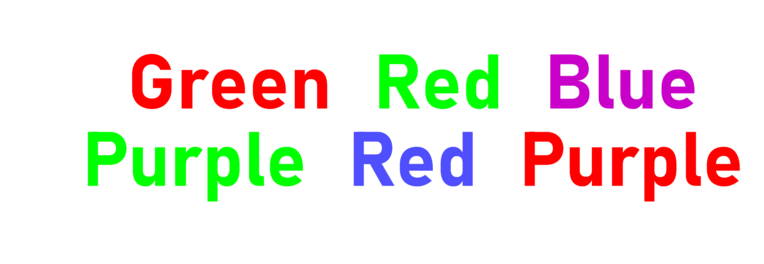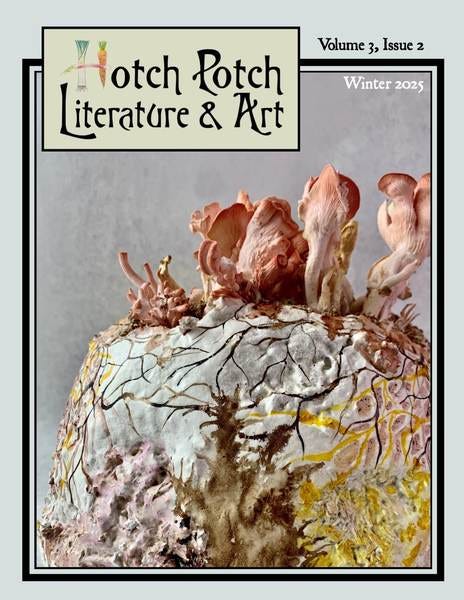Proofreading and cognitive bias
Is that typo in your published manuscript really the end of the world?
This weekend I won a bet with my husband on the subject of proofreading. Since I was so totally right, I regret failing to attach serious stakes to the wager. I could have gotten out of cleaning the toilet. Wait—no!—I could have hedged for dinner at my favorite restaurant!
Since I was too chicken to wager, I’ll celebrate my win by relating the nature of our bet and by explaining what the exploration taught me about the importance of proofreading.
Typos happen. Small mistakes in a published draft are no big deal—right?
It turns out the answer is…both. Yes, they are—and no, they’re not.
Here’s why.
When a small mistake becomes are a big deal
A morning in the life of a Hotch Potch contributing editor:
I’ve just provided my youngest son with materials to make his own sandwich and tossed my English muffin on the toaster. My smart watch vibrates with a message from a fellow editor. I flip open my laptop to confront a screenshot from the final proof of my story in Hotch Potch Issue 3.2.
My colleague asks me to verify whether I meant “title girl?” or “little girl.”
I meant to write little girl. I shoot off an email to that effect with a side order of sincere thanks. Then I rescue my English muffin before it burns and save our kitchen from our son, who’s trying to spread it with apricot jelly.
For a moment, I feel satisfied. Breakfast saved, kitchen clean, typo defeated. A good start to the morning. After all, typos happen. Not a big deal, right?
Well, no…but also, yes!
Here’s the thing about a typo: it breaks the magic spell the writer has created with words.
Imagine attending a Zoom call when a major network glitch erases a fellow participant’s voice or video—or boots them off the call, altogether. The illusion of attending a confab with your far-flung colleagues is instantly shattered. The same is true in story. Readers inhabit a virtual experience created by words. A typo is like a network glitch. Small errors can jolt, disorient, annoy, engender giggles. No matter how a reader feels about the interruption, their attention just slid from the realm of story to remembering their gripping experience is no more than words.
As a writer, I don’t want my story spell broken by some silly mistake.
How small mistakes happen
As I munch my PBJ English muffin, I ask my husband, how could that mistake still be present after all that’s been done to weed out errors?
Here’s the wringer “Aunt BB and the Hollowers” has been through:
1. I edited the story multiple times.
2. I ran the story through ProWriting Aid.
3. My husband read the story.
4. I uploaded the story into Google Docs and used its intelligence to catch a bunch of errors.
5. A fellow Hotch Potch editor edited the story.
6. A second Hotch Potch editor proofed the story.
7. After the story was uploaded for layout, I proofed the entire text again—word-by-word.
How could that mistake have survived so many attempts to squash it?
My computer-coder husband sips his coffee and considers. Loathe to believe the error slipped past his expert eye, he suggests “title girl” was introduced somewhere in the production chain—the result of multiple edits, multiple editors, and software conversions.
I bet not, I say. I bet if I opened my original file, the error is sitting right there staring at me.
And guess what I found:
That error passed my notice, all the tech assistance, plus at least two other editors’ scrutiny before getting caught. And, yes, it passed right by my handsome hubby’s attention, too. Darn, I should have anted up for that dinner date.
It’s no mystery how the error occurred: I typed the word little—perhaps my finger slipped on a key—and my word processor autocorrected to title.
I don’t have the tech chops to explain why corrective software failed to discern the mistake. Besides, what interests me more is why so many intelligent humans failed to miss that error. To start, let’s look at how we catch errors.
How we catch errors
I sieved my manuscript through several primary, time-tested methods of scrutinizing for errors.
1. I let machines help.
2. I got fresh perspective: transferring the text to a variety of different formats (Scrivener, Google Docs, PDF) with different typesetting. Viewing text in different contexts uncovers mistakes.
3. I collaborated: with readers, proofreaders, and editors. A lot! Multiple sets of eyeballs are better than one.
4. I took breaks: not just while combing through my drafts, but I scheduled space between proofing passes to refresh my perspective.
About the only trick I didn’t employ was reading the manuscript backwards. So how did “title girl” get through?
Why we miss errors
The above techniques are aimed at several reasons we miss typos in our manuscripts:
1. Human error
2. Fatigue
3. Visual overload
4. Familiarity with text
5. Focus (eg., focused on a content edit, fixing a continuity issue, working through punctuation problems)
All valid issues. However, we haven’t gotten to the biggie, yet. The elephant-in-the-room reason why writers and editors and proofreaders miss small mistakes. It was definitely the primary reason so many experts failed to nab “title girl.”
Ready for the answer? Drum roll, please.
Cognitive Bias
Call it expectation bias, confirmation bias, or borrow a term from psychology and call it top-down analysis. However you label it, the phenomenon comes down to what happens when our expectations and the reality of a situation don’t quite line up. Cognitive scientists know our sensory experiences filter through expectations built from past experience.
Try it for yourself, play a little game of “Stroop Effect.” Read out loud the colors. Not the words, say the colors:

Yikes. For me, like most humans, saying the correct color out loud is hard!
As readers, our brains are preloaded with corrective algorithms. We’ve read the phrase “little girl” thousands and thousands of times. Even if we see the word “title girl,” our brain autocorrects the error.
We don’t see what we see. We see what we expect to see.
Which brings me back to the question at the top of this post: how big a deal are typos?
Are typos a big deal in published manuscripts or not?
The answer? It depends.
Some small errors are going to slide right past a reader’s notice, just like “title girl” ghosted past multiple capable proofreaders.
However, if the reader happens to catch the error? Then, yeah, it’s a big deal. Errors jolt the reader out of story’s magic spell and remind us this visceral, emotional experience is nothing more than a bunch of letters. Recently, I’ve experienced several such letdowns in picture books produced by big-name publishers. Every time I’ve disengaged with the story to wonder how, with so few words on the page, any editor could miss such a glaring mistake. Of course, I’ve just explained why.
In the end, while I missed my chance for a dinner date out, I’m still thrilled by the outcome of “The ‘Title Girl’ Incident.” A fellow editor’s expertise, commitment, and care was exactly the safety net my story needed. That’s better than palak paneer.
The excerpt featured in this post comes from Issue 3.2 of Hotch Potch, which went live this weekend!! I have two stories in the issue: “Aunt BB and the Hollowers” and “The Love Spell.” Check them out! If you find any errors, I’ll try to sweet talk a fellow editor into uploading a corrected draft.
And thank you, Gail—editor extraordinaire—for finding that error!






OMG I loved this essay, Heather, and not just because I was part of the story! I have one thing to add for readers, something my current publisher shared with me that is literally a game-changer when it comes to proofing. Apparently, Word has a function where you can play your story back on audio-in other words, you can listen to it. I used to have my college students read their papers out loud, which is good. But having an AI read it while you're doing something mundane, like the dishes, is something I'm going to try for my next proofing assignment. As always, great reading you...and I will be restacking this one for sure! xo